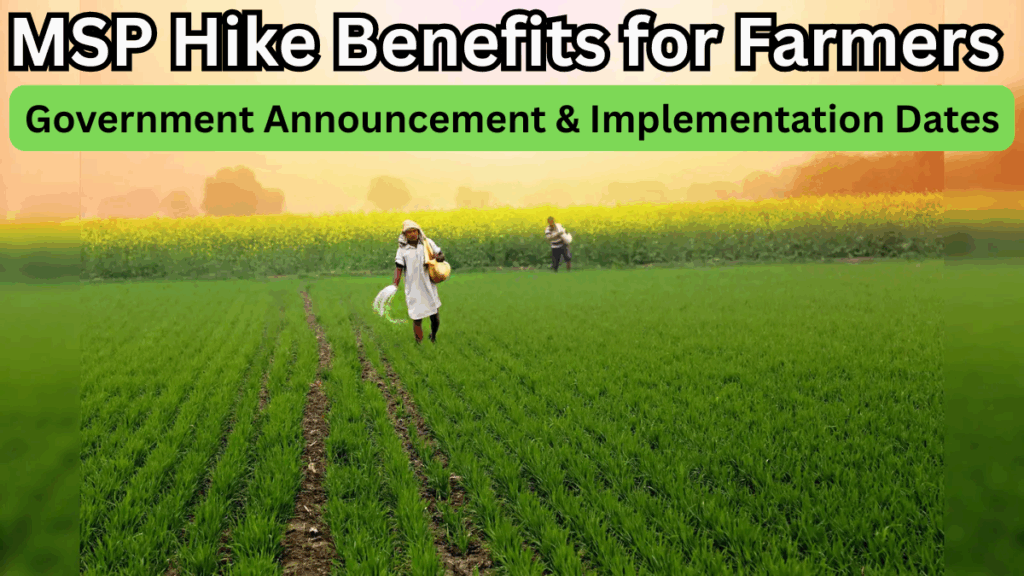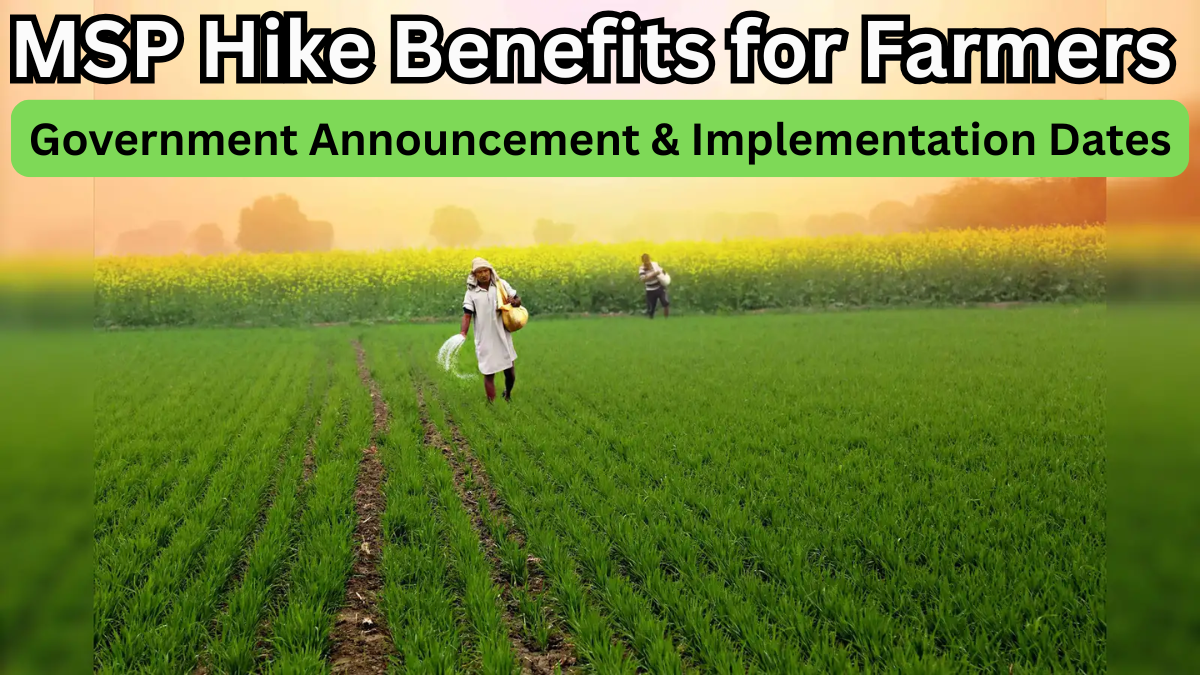The agricultural sector in India is witnessing another significant boost as the government unveils new MSP Hike Benefits for Farmers 2025. This timely Government Announcement has brought hope and excitement to farmers across the country, promising better returns on their hard work.
If you’re a farmer or someone closely following agricultural reforms, understanding these MSP changes, implementation timelines, and benefits is essential. Let’s break down everything you need to know about the MSP Hike Benefits for Farmers 2025.

What is MSP and Why is This Hike Important?
Minimum Support Price (MSP) is the guaranteed price set by the government to purchase crops directly from farmers. It ensures farmers get a fair price, protecting them from market fluctuations.
This year’s MSP hike is especially crucial because:
-
It increases farmers’ income security.
-
Encourages crop diversification.
-
Supports agricultural sustainability.
-
Improves rural economic growth.
Highlights of the MSP Hike Benefits for Farmers 2025
Following the latest Government Announcement, here are the key details of the MSP revisions for 2025:
-
Average Increase: The MSP for major crops has been raised by approximately 8-12%.
-
Crop-wise Rates: The hike varies depending on the crop, with pulses and oilseeds seeing a higher percentage increase.
-
Implementation Date: The revised MSP will be effective from the upcoming Rabi season starting November 2025.
-
Government Procurement: The government assures timely procurement at these new rates through its agencies.
Crop-wise MSP Hike Rate List 2025
| Crop | MSP 2024 (Rs/Quintal) | MSP 2025 (Rs/Quintal) | Percentage Hike (%) |
|---|---|---|---|
| Wheat | 2,135 | 2,320 | 8.7 |
| Rice (Common) | 1,940 | 2,150 | 10.8 |
| Maize | 1,850 | 2,050 | 10.8 |
| Pulses (Tur) | 5,300 | 6,000 | 13.2 |
| Groundnut | 5,400 | 6,100 | 12.9 |
Note: Rates vary by state and procurement agency.
How Do Farmers Benefit from the MSP Hike in 2025?
The MSP Hike Benefits for Farmers 2025 bring several advantages that go beyond just better pricing:
-
Enhanced Income: Directly increases farmers’ earnings for their produce.
-
Reduced Distress Sales: Farmers can avoid selling crops at lower prices due to market pressures.
-
Boost to Crop Production: Encourages farmers to grow more diverse and high-value crops.
-
Better Market Stability: Creates a safety net against volatile prices and ensures timely payments.
Government Announcement: What It Means for You
The recent Government Announcement highlights the commitment to empowering farmers with:
-
Stronger procurement mechanisms.
-
Expanded coverage of MSP to more crops.
-
Improved awareness campaigns to educate farmers about MSP benefits.
-
Digitized platforms for hassle-free transactions.
The government aims for smooth implementation, ensuring farmers directly feel the positive impact of these hikes.
Frequently Asked Questions (FAQs)
Q1: When will the new MSP rates be implemented?
A1: The new MSP rates will come into effect from the Rabi crop season starting November 2025.
Q2: Are all crops included in the MSP hike?
A2: The hike covers major Kharif and Rabi crops, including wheat, rice, pulses, and oilseeds. The government is also planning to expand MSP coverage to other crops gradually.
Q3: How can farmers sell their crops at the new MSP rates?
A3: Farmers can sell directly to government procurement agencies like FCI and state procurement bodies, which will buy at the announced MSP.
Q4: Will MSP hikes lead to higher market prices for consumers?
A4: While MSP hikes may influence retail prices, the government balances procurement and supply to minimize impact on consumers.
Final Thoughts
The MSP Hike Benefits for Farmers 2025 marks a positive step toward strengthening India’s agricultural backbone. With the government’s clear and timely announcement, farmers can look forward to more stability and growth in their livelihoods.
Click here to learn more
